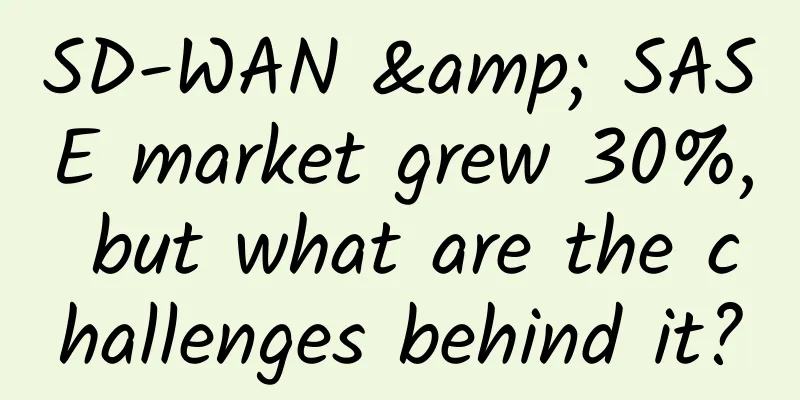SD-WAN & SASE market grew 30%, but what are the challenges behind it?

|
According to the latest "SASE & SD-WAN & SSE Market Research Report" released by Dell'Oro Group, the SSE (Secure Service Edge) market grew 40% year-on-year to more than $800 million in the first quarter of 2022. SSE is a relatively new market that incorporates cloud-centric security features to facilitate secure access to the Web, cloud services, and private applications. SSE forms the security portion of SASE. Within SASE, SSE focuses on unifying all security services, including secure web gateways (SWG), cloud access security brokers (CASB), zero-trust network access (ZTNA), and firewall as a service (FWaaS). The other half of the SASE platform focuses on the simplification and unification of network services, including software-defined wide area networks (SD-WAN), WAN optimization, quality of service (QoS), and other methods to improve routing to cloud applications. "In the age of distributed applications and hybrid work, enterprises are increasingly looking to cloud-delivered security over traditional on-premises solutions," said Mauricio Sanchez, research director for network security, SASE and SD-WAN at Dell'Oro Group. In addition, the report also mentioned the following points:
However, despite the market growth, the intricate challenges surrounding SD-WAN and SASE remain. MEF (Metro Ethernet Forum) interviewed and surveyed 36 experts from 10 service providers and summarized the current problems and challenges in the development of SD-WAN and SASE. Challenge 1: Lack of clear standardization of managed SD-WAN servicesMEF said SD-WAN service providers face challenges with a lack of clear standards and interoperability. Standards organizations such as MEF are working to develop SD-WAN specifications, but service providers have not yet reached a consensus on how to standardize SD-WAN. One vendor's service may not be compatible with another vendor, which poses a challenge to how to integrate services between vendors. SD-WAN challenges include:
Challenge 2: SASE services are also difficult to defineSASE is a relatively new technology and the challenges it faces are comparable to those of SD-WAN, but more complex because the technology is still in the early stages of development. SASE challenges include:
MEF said that although the SD-WAN and SASE markets are still on an upward trend, the challenges brought by the complexity of these two technologies may hinder their development momentum in the future. |
<<: 97% of UK business leaders expect quantum computing to disrupt their industry
>>: What new developments have occurred in the 5G field in the first half of 2022?
Recommend
Veteran Network Engineer: Talking about Several Typical Deployments and Practices of SD-WAN
A few days ago, I talked with my colleagues about...
Will 5G phones turn back to 4G? Possibly
At the press conference of the State Council Info...
In the new era, how can operators seize the opportunity of industrial Internet?
2020 is the year when 5G enters large-scale appli...
The love-hate relationship between TCP and UDP
Recently, the epidemic in Qiaoxi District, Shijia...
Operators’ Path to Artificial Intelligence
After a year of development, AI technology and ap...
Mercury enables remote procedure calls (RPC) for high performance computing
summary Remote Procedure Call (RPC) is a widely u...
Which of the three major operators has the highest user complaint rate? This data tells you
Recently, the Carrier World Network and the China...
my country's broadband users reach 510 million: 100M rate reaches 91.5% and Gigabit users exceed 14 million
[[419885]] What's the bandwidth of your home ...
OneTechCloud: 25.2 yuan/month KVM-1GB/20G SSD/5M unlimited traffic/Hong Kong CN2
OneTechCloud is a Chinese hosting company establi...
5G and IoT: Compatible with each other
5G is here! It’s hard to ignore the hype surround...
Hostodo: $34.99/year KVM-2.5GB/25G NVMe/8TB/3 data centers
Hostodo released two special packages in Septembe...
Following ZTE and Huawei, China Mobile is again caught up in the "national security threat" scandal in the US
Trump reportedly blocked China Mobile from enteri...
Three ways to improve WiFi signal
"I'm stuck in a circle after watching ha...
Why do Tencent and Alibaba use LoRa, and operators use NB-loT?
Industry insiders are familiar with LoRa technolo...
What is Open RAN?
Open RAN is an industry standard designed to powe...









